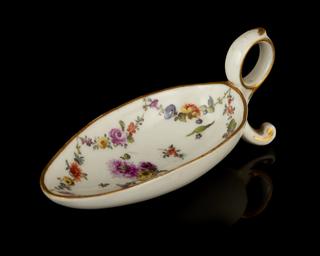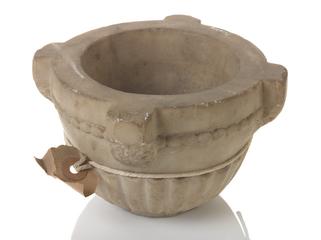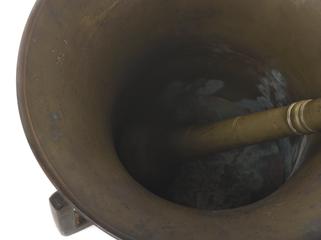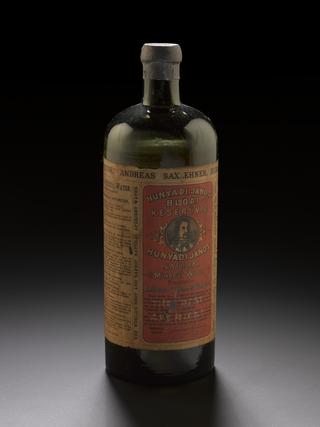




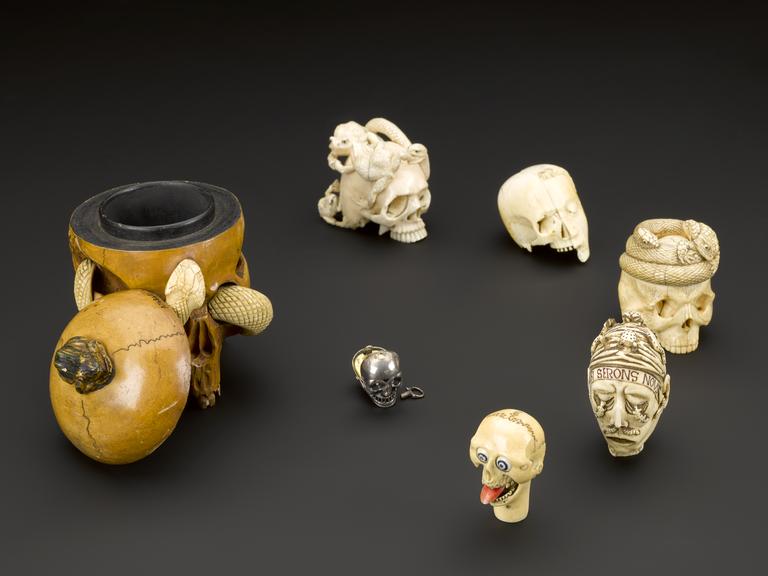

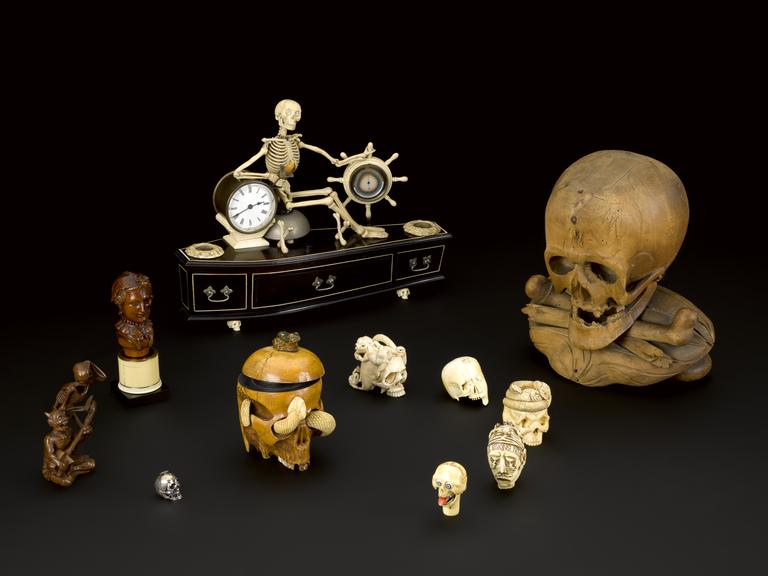

Silver vinaigrette in the form of a skull, hinged, opens into two halves, with a perforated silver gilt inner lid, engraved with initials, unsigned, Europe, 1701-1800
Likes pomanders, vinaigrettes could be used as a vessel to hold strong smelling substances to be sniffed should the user be passing through a particularly smelly area. At a time when miasma theories of disease – the idea that disease was carried by foul air – were dominant, carrying a vinaigrette was considered a protective measure. Vapours from a vinegar-soaked sponge in the bottom were inhaled through the small holes in the top of the ‘acorn’. If a person felt faint they could also sniff their vinaigrette and the sharp vinegar smell might shock the body into action. The skull was probably hung from a piece of cord or necklace and carried at all times. It is shown here with another skull-shaped example (A641486).
Details
- Category:
- Pharmacy-ware
- Collection:
- Sir Henry Wellcome's Museum Collection
- Object Number:
- A642133
- Materials:
- silver and gold (plated), ? material
- Measurements:
-
overall: 27 mm x 22 mm x 30 mm, 0.02kg
- type:
- vinaigrette
- credit:
- Loan, Wellcome Trust
